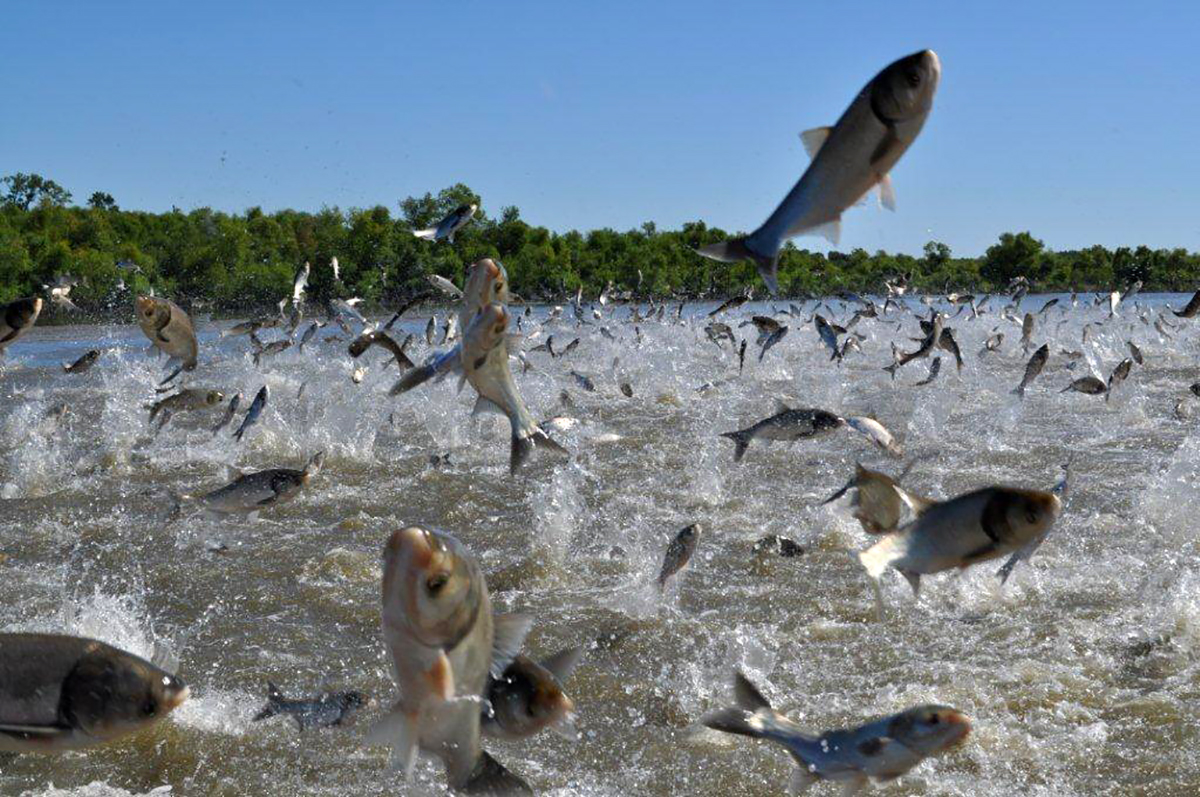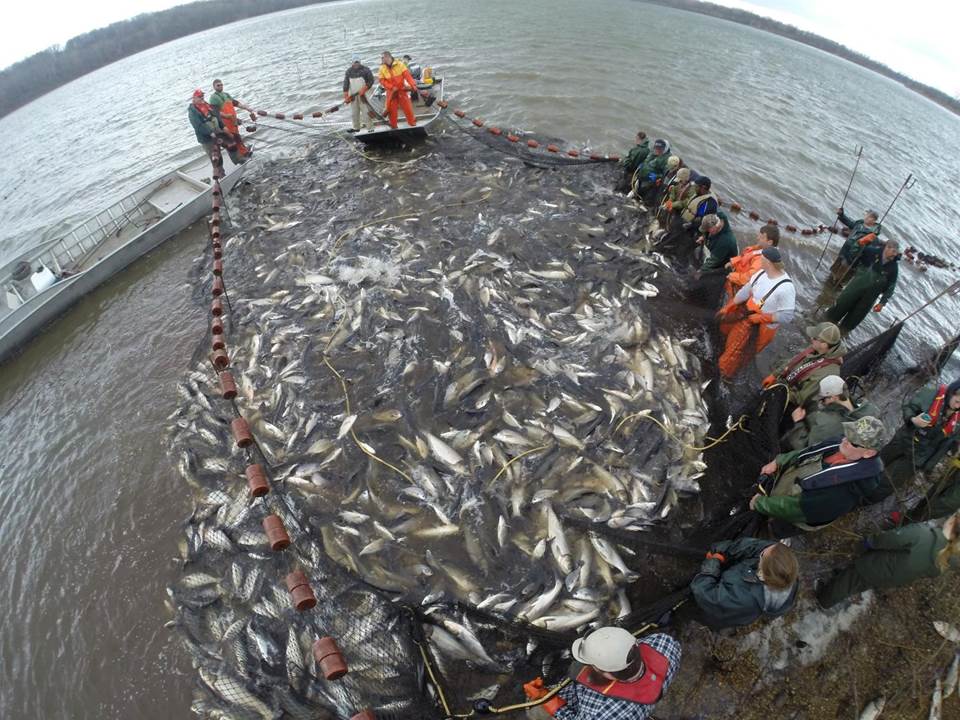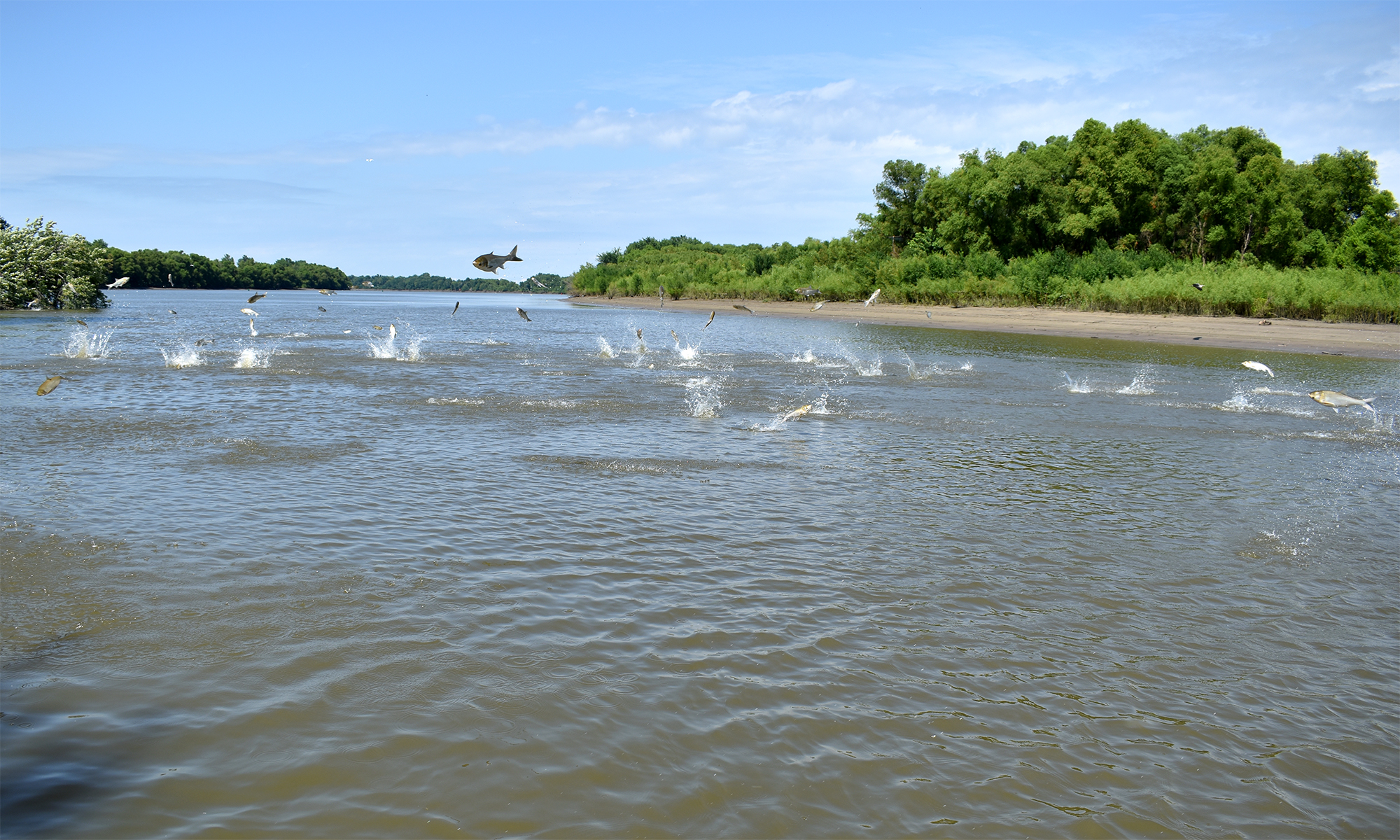Invasive Carp Research
Supporting management of invasive carp
Aquatic nuisance species significantly impact aquatic resources, management strategies, and public perception of the Illinois River and its connected waterways.

Since its development and expansion, numerous nuisance and injurious species have used the Chicago Area Waterway System (CAWS) as a corridor of invasion between the Great Lakes and the Mississippi River Basin. The most recent high-profile invaders, the invasive carps (i.e., silver carp, bighead carp, black carp, and grass carp), have had a profound effect on Illinois and the Mississippi River Basin’s economic and ecological resources.
State and federal agencies must implement strong measures—such as the CAWS electric barrier and the Illinois Department of Natural Resources (IDNR) targeted contracted commercial harvest—to track and limit the fishes’ further spread to new ecosystems.

Based on the state and federal experience in the Illinois River with zebra mussels (Dreissena spp.) in the 1990s, we know that new species can often invade and degrade a river system and spread unchecked faster than agencies and institutions can respond. Research into the underlying factors of a rapid invasion and how these can be exploited to limit the speed and spread of an invasion are key to enhancing and expanding the Illinois DNR-led response and control efforts, as well as continuing to expand our understanding of invasive carp effects and constraints.
This project places four staff members, co-located in the Yorkville, IL area, with IDNR’s Aquatic Nuisance Species Program staff as well as District Biologists, and one staff member at IRBS in Havana, IL. This has the added benefit of having an experienced team of biologists in place in the event of the detection of the invasion by previously unrecorded aquatic nuisance species (e.g., Chinese mitten crab, bloody red shrimp, water hyacinth) as well as support the research goals of IRBS and needs of IDNR. Tasks include weekly field sampling and analysis of fisheries of the Upper Illinois Waterway and CAWS using standardized methods (electrofishing, netting) compatible with the IDNR invasive carp monitoring program.

